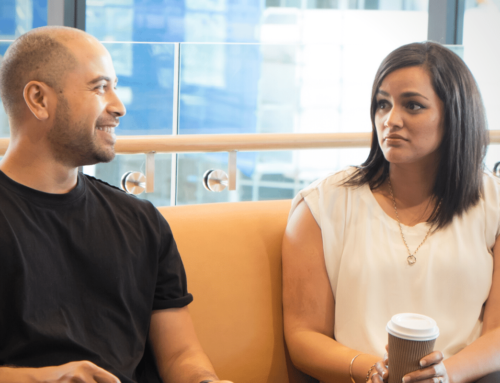For my column on orthorexia in Sunday’s Seattle Times, I spoke with Colorado CrossFit trainer and fitness writer Wendy Spin.
As I mentioned ever-so-briefly in my column, Wendy developed orthorexia nine years ago, when she was 21 and immersed in training for bodybuilding and fitness shows. She was obsessed with counting calories and protein grams, and was restricting a number of foods. When life would get stressful, as it does, she would turn to her counting and restricting as a way of coping.
This is a common feature of eating disorders. There is much in life that we can’t control, but we can control our food. People who are predisposed to eating disorders (as Wendy is, with a family history of eating disorders) may have fewer coping mechanisms at their disposal than other people.
Wendy had enough self awareness to have a sense of what was happening, and that it wasn’t healthy. She thought changing her environment would help…to no avail. “I walked away from bodybuilding and realized the eating disorder was still there.”
Bodybuilding is a very appearance-oriented sport, whereas CrossFit training is more about strength and performance. She thought CrossFit might be a better and healthier fit for her. Then she fell prey to what she calls “the herd mentality” and adopted a paleo diet. If you aren’t familiar with the CrossFit gym culture, it goes almost hand-in-hand with the paleo diet.
Paleo challenges, competitions in which participants adhere to a strict paleo diet for a period of time (often 30 days) are also a common feature of the CrossFit culture. Wendy entered one of these challenges, and was determined to win it. That’s where she says she got into trouble. When she ate anything that wasn’t paleo, she would mentally beat herself up well beyond the point of what any reasonable person would think is…reasonable.
Her self-awareness kicked back in, and she sought treatment from Eating Recovery Center in Denver. Many eating disorder treatment centers offer different tiers of treatment. Partial hospitalization is the most intensive form of outpatient treatment, and in Wendy’s case that meant 11 hours a day for two months in early 2011.
Until that point, her friends and family had no idea that she had an eating disorder. They hadn’t associated her mood swings and wild emotions with an eating disorder because she was always at a “normal” weight. In retrospect, of course, they could see the connections.
Wendy said she decided not to follow the recommendations to leave CrossFit behind, even though she knows that staying in that environment increases the risk that she will fall back into disordered eating patterns. Instead, she’s chosen to remain a part of the CrossFit community, actively and candidly writing about her experiences and about CrossFit in general on her blog, RealFit Rx. She’s an advocate for eating disorder recovery and sane eating habits. On her blog, she says, “I’m not paleo, zone, or any other bullshit diet out there that will implode a non discernible source of guilt if deviated from.”
“I’ve noticed it’s a problem when you start to identify with your diet,” she said, pointing out that even Loren Cordain, Ph.D., founder of the modern paleo diet, endorses flexibility.
“If people are telling you that your diet is impacting your life, and all kinds of people are telling you that what you’re doing isn’t normal, pointing out that normal people don’t skip barbecues and carry containers of food with them everywhere, then maybe you should listen,” she said. “I discounted so many people, you have no idea. This is just how it is.”
When I asked her how she’s doing now with her recovery, Wendy said, “It ebbs and flows. I think I’m far better off than I was before.”







